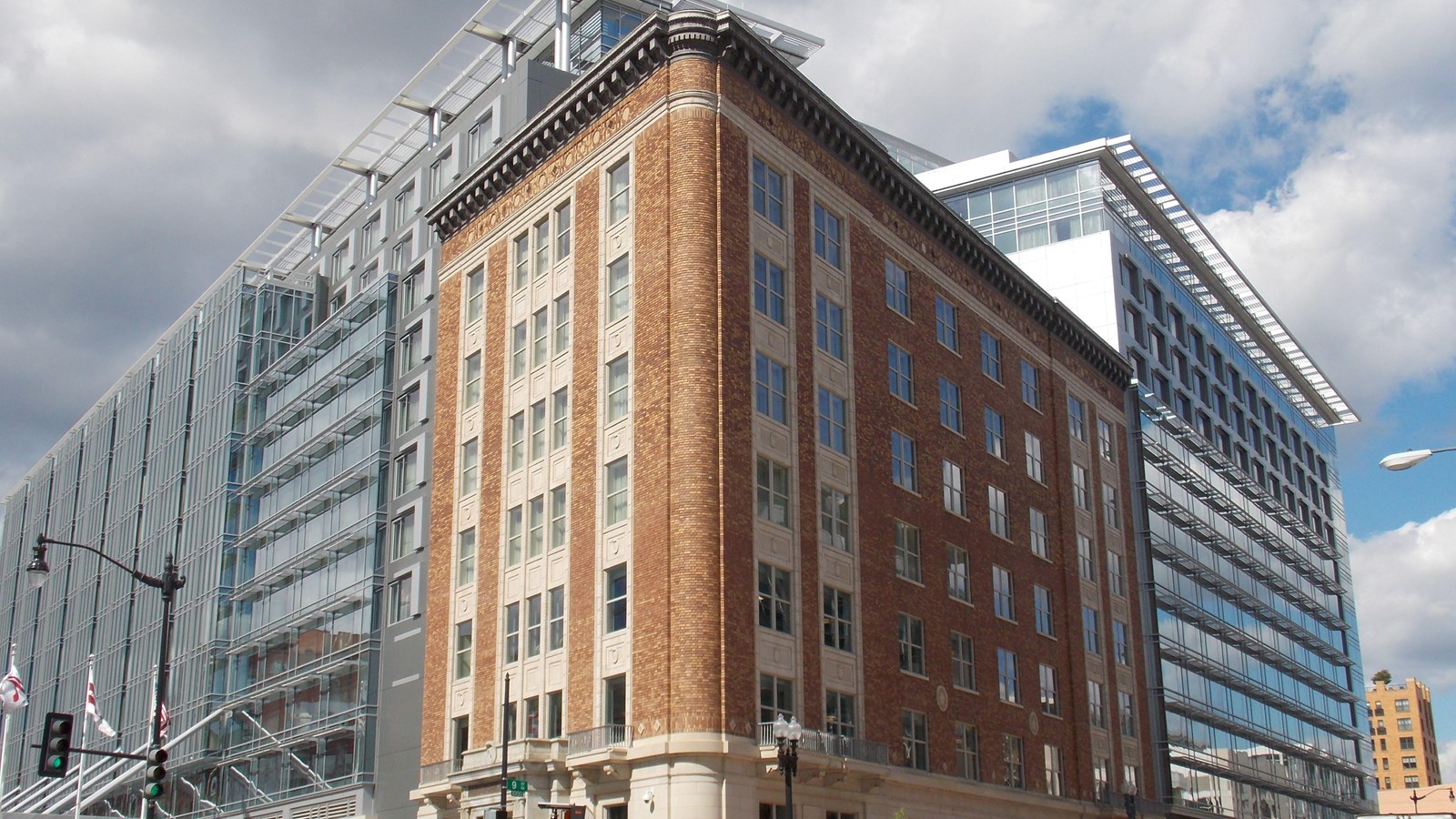Last updated: September 18, 2020
Place
American Federation of Labor Building

Wikimedia Commons
The American Federation of Labor (known today as the AFL-CIO) is a national labor organization dedicated to bettering the working conditions of millions of American industrial laborers. The American Federation of Labor Building in Washington D.C. served as the union’s national headquarters from 1916 to 1955. During this period, the AFL grew into one of the most powerful labor organizations in the country and propelled the labor movement into the national spotlight. The AFL developed a strong relationship with the Federal government during the 1910s and 1920s and successfully lobbied Congress to pass the National Industrial Recovery Act of 1933 that recognized workers’ collective bargaining rights. During his tenure as AFL president, famed labor leader Samuel Gompers declared that the AFL building in DC was emblematic of the early 20th century achievements of the American labor movement.
Samuel Gompers, a Jewish-American cigar-maker and labor activist established the American Federation of Labor in 1881 by transforming his small Cigarmakers’ Union into the Federation of Organized Trades and Labor Unions of the United States and Canada. In 1886, the organization changed its name to the American Federation of Labor and began organizing separate trade unions of skilled workers under one umbrella organization. Under Gompers’ leadership, the AFL grew steadily until the early 1900s when competition from the Industrial Workers of the World forced the organization to make policy changes. In an effort to gain broad American support, Gompers allied with the Federal government during the start of the First World War and succeeded in increasing union membership to over 4 million by the war’s end.
In 1897, the AFL relocated from Indianapolis, Indiana to Washington D.C. as part of a strategy to influence national legislative policies on labor affairs. The AFL built two successive headquarters buildings on G Street, NW, but both were eventually vacated and subsequently demolished by 1915. That same year, the AFL hired prolific architectural firm Milburn, Heister and Company to design a seven-story brick and limestone high-rise on the corner of 9th Street and Massachusetts Avenue NW in the bustling business district of Washington’s Mount Vernon Square. The AFL building was constructed in the Chicago School Style, an architectural style popular in the late 19th century for commercial high-rise office buildings. The AFL intentionally chose to construct their new headquarters on the site of a 19th century slave quarters, highlighting the organization’s mission to provide equality through labor organization. The opening ceremony of the AFL’s new headquarters building was attended by President Woodrow Wilson. Members of the public and union officials alike referred to the building as America’s “National Labor Temple.”
The AFL Building stands only a short distance from Samuel Gompers’ home on First Street, NW where the AFL director engaged in discussions on national labor policy. Gompers’ Home was designated as a National Historic Landmark in September 1974 along with the AFL Building. After Gompers’ death in 1924, the AFL underwent profound changes. Major steel corporations refused to recognize basic labor rights and semi-skilled industrial laborers began organizing their own unions and directing members away from the AFL. Despite major membership losses in the 1920s, New Deal Era policies including the National Industrial Recovery Act of 1933 renewed skilled and unskilled workers interest in joining unions, including the AFL. In the post-World War II era, AFL leadership acknowledged the gains of industrial labor unions by merging with the Congress of Industrial Organizations (CIO) in 1955. The AFL-CIO merger involved the restructuring of the union’s leadership which required a larger headquarters space. Later that same year, the AFL-CIO relocated to the 800 block of 16th Street, NW near Lafayette Square and the White House where it still resides today.
The former AFL Building housed the Pipefitter’s Union, a subsidiary of the AFL-CIO, from 1956 until the property was purchased by the Marriott Hospitality Company in 2002 for the construction of a conference center hotel. As part of the land sale agreement with the Pipefitter’s Union, Marriott agreed to incorporate the historic structure into its plans for a new hotel and meeting center which were eventually completed in 2014. Today, the AFL Building houses restaurants and other recreational amenities for hotel guests. Despite its inclusion in a 21st century hotel complex, the American Federation of Labor Building remains a powerful physical symbol of the organization’s decades-long struggle to achieve better working conditions for millions of American skilled and unskilled laborers
Sources:
American Federation of Labor – Congress of Industrialized Organizations Samuel Gompers, retrieved on 1/14/2020 https://aflcio.org/about/history/labor-history-people/samuel-gompers
Library of Congress,
AFL During the Great Depression, retrieved on 11/14/2020 http://www.loc.gov/teachers/classroommaterials/presentationsandactivities/presentations/timeline/depwwii/unions/
Greene, Julie
1998 Pure and Simple Politics: The American Federation of Labor and Political Activism, 1881-1917, Cambridge University Press, Cambridge, UK
National Park Service
1974 American Federation of Labor Building, National Historic Landmark Nomination Form
https://catalog.archives.gov/id/117691777
The Living New Deal
The National Recovery Act (1933), retrieved on 1/15/2020
https://livingnewdeal.org/glossary/national-industrial-recovery-act-1933/
National Historic Landmarks (NHLs) are historic places that possess exceptional value in commemorating or illustrating the history of the United States. The National Park Service’s National Historic Landmarks Program oversees the designation of such sites. There are just over 2,500 National Historic Landmarks. All NHLs are also listed in the National Register of Historic Places.
